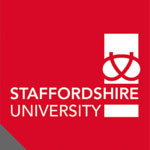Preservation Through Innovation
BROWNSWORD, Neil (2020) Preservation Through Innovation. https://ceramic.school/the-ceramics-congress/.
|
Text (Introduction to the Ceramic Congress Korea 2020)
Korea Focus Catalogue.pdf - Publisher's typeset copy Available under License All Rights Reserved. Download (158MB) | Preview |
Abstract or description
This text was commissioned by curator Hyeyoung Cho for the 2020 Ceramics Congress Korea for the exhibition Transcending Heritage - Past, Present and Future.
'The exhibition features dynamic changes in Korean ceramics. The foundation of the subject looks at the past, the present and the future of contemporary Korean ceramics. Based on the rich historical tradition, many Korean makers since the 1970s have attempted to find new ways to lead the path.
There has been many experimentations and today, the younger generation are open to narrative voices rather than focusing much on the heavy burden of ancestral roots. The trends are certainly changing and the curatorial perspective of this online exhibition looks at the many different ways ceramics can be expressed. From re-interpretation of tradition to new ways the objective is to give the audience a glimpse of what is happening in the ceramics world today. 50 artists selected here are all different and they speak their own language in clay. Diversity, co-existence of time, inter-change of cultures is the focus of the exhibition.' Hyeyoung Cho 2020
Preservation through Innovation
Neil Brownsword
Throughout history, ceramics have played an important role in the phenomenon of cultural transfer. For centuries China, Korea and Japan have influenced each other’s aesthetics, practices and technologies. Subsequent trade with the West, and the imitation and assimilation of East Asian goods and styles in the late 17th and 18th centuries greatly influenced the development of new ceramic traditions in Europe that were to gain historical prominence. In 2017 I had the unique experience of extending this historic cycle of knowledge exchange, through a solo exhibition - Factory staged at Icheon World Ceramic Centre, South Korea. It coincided with the Gyeonggi International Ceramic Biennale (GICB) – a prestigious platform that showcases current trends from across the globe that redefine notions of ceramics as both subject and material. Here works which expressed social, political, cultural and environmental concerns would frequently deconstruct and intersect the boundaries of sculpture, installation, performance, sound, image, film and the digital. This external pluralism continues to enhance 10,000 years of ceramic material culture, but alongside these converging synergies the Korean ceramics I was most drawn to, upheld traditional values of making and workmanship. With globalisation cultural diversity inevitably becomes homogenised, but in Korea I noticed a coexistence of pure tradition that adheres to and preserves heritage; alongside its rejection in pursuit of individual expression; together with some practitioners reinterpreting the formal language of archetypes through contemporary thinking. It is this diversification where the past intersects the present within medium specificity that gives this dynamic ceramic culture its unique identity.
In Icheon I was fortunate to experience these values first-hand, not through ‘messy’ modes of cultural appropriation, but via the mutual exchange of haptic and tacit knowledge which has shaped the integrity of these traditions. The Factory project involved my working in collaboration with designated intangible cultural asset Kwangsu Seo, who completely overturned my initial presumptions of traditional knowledge being dictated by limitations. Through the exchange I encountered an openness to risk where a collision of impromptu and measured judgement informed research with no specific outcome other than to satisfy fervent curiosity. This process of ‘conceptualising through crafting’ was extended via collaborations with three other Korean master artisans, through which intergenerational skills cultivated by instruction were applied to experimental contexts that redefined inherited notions of perfection.
To reciprocate the exchange, I invited prominent Korean artists whose practices exemplify dialogue between tradition and the contemporary, to Stoke-on-Trent to partake in the 2017 British Ceramics Biennial. Kanghyo Lee and Oh Hyangjong, skilled masters of Buncheong and Onggi ceramics passionately demonstrate their innate understanding and concern for the continuation of these practices. Yet their work transfers nuances of these crafts into innovative performances that emphasise bodily intelligence through repetition and spontaneous action. As an outsider looking in, the raw power of Korean ceramics is their ability to transcend time – to communicate humanity through perfectly weighted nuances of touch; to articulate the possibilities and limitations of the material through an immersed understanding; to harness serendipity as a vantage point and to appropriate the past without being ensnared by it.
| Item Type: | Article |
|---|---|
| Faculty: | School of Creative Arts and Engineering > Art and Design |
| Depositing User: | Neil BROWNSWORD |
| Date Deposited: | 16 Dec 2020 11:10 |
| Last Modified: | 24 Feb 2023 14:00 |
| URI: | https://eprints.staffs.ac.uk/id/eprint/6691 |
Actions (login required)
 |
View Item |

 Lists
Lists Lists
Lists






